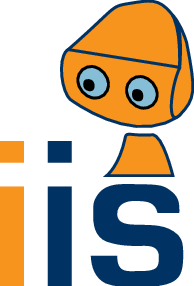Home
People
Projects
Research
Publications
Surveys
Courses
Student Projects
Jobs
Downloads
Sidebar
This is an old revision of the document!
Table of Contents
Externally-Funded, Collaborative Projects
Current EU Projects
PaCMan (EU FP7-ICT-STREP, 2013-2016) advances methods for object perception, representation and manipulation so that a robot is able to robustly manipulate objects even when those objects are unfamiliar, and even though the robot has unreliable perception and action. The proposal is founded on two assumptions. The first of these is that the representation of the object's shape in particular and of other properties in general will benefit from being compositional (or very loosely hierarchical and part based). The second is that manipulation planning and execution benefits from explicitly reasoning about uncertainty in object pose, shape etcetera; how it changes under the robot's actions, and the robot should plan actions that not only achieve the task, but gather information to make task achievement more reliable.
 Xperience (EU FP7-ICT-IP, 2011-2015) pursues two principal objectives. The first goal is to show that the state of the art enactive embodied cognition systems can be significantly enhanced by using structural bootstrapping - a concept taken from language learning. The second goal is to implement a complete robot system for automating introspective, predictive, and interactive understanding of actions and dynamic situations.
Xperience (EU FP7-ICT-IP, 2011-2015) pursues two principal objectives. The first goal is to show that the state of the art enactive embodied cognition systems can be significantly enhanced by using structural bootstrapping - a concept taken from language learning. The second goal is to implement a complete robot system for automating introspective, predictive, and interactive understanding of actions and dynamic situations.
 IntellAct (EU FP7-ICT-STREP, 2011-2014) addresses the problem of understanding and exploiting the meaning (semantics) of manipulations in terms of objects, actions and their consequences for reproducing human actions with machines. This is in particular required for the interaction between humans and robots in which the robot has to understand the human action and then to transfer it to its own embodiment.
IntellAct (EU FP7-ICT-STREP, 2011-2014) addresses the problem of understanding and exploiting the meaning (semantics) of manipulations in terms of objects, actions and their consequences for reproducing human actions with machines. This is in particular required for the interaction between humans and robots in which the robot has to understand the human action and then to transfer it to its own embodiment.
Completed Projects (Selection)
 LearnBiP (EU FP7-ICT ECHORD Experiment, 2011-2012) has two main aims. First it utilizes the huge amount of data generated in industrial bin-picking for the introduction of grasp learning. Second it evaluates the potential of the SCHUNK dexterous hand SDH-2 for its application in industrial bin-picking.
LearnBiP (EU FP7-ICT ECHORD Experiment, 2011-2012) has two main aims. First it utilizes the huge amount of data generated in industrial bin-picking for the introduction of grasp learning. Second it evaluates the potential of the SCHUNK dexterous hand SDH-2 for its application in industrial bin-picking.
 SignSpeak (EU FP7-ICT-STREP, 2009-2012) focused on scientific understanding and vision-based technological development for continuous sign language recognition and translation. The aim was to increase the linguistic understanding of sign languages and to create methods for transcribing sign language into text. See an article in the Projects magazine.
SignSpeak (EU FP7-ICT-STREP, 2009-2012) focused on scientific understanding and vision-based technological development for continuous sign language recognition and translation. The aim was to increase the linguistic understanding of sign languages and to create methods for transcribing sign language into text. See an article in the Projects magazine.
 PACO-PLUS (“perception, action and cognition through learning of object-action complexes”, EU FP6-IST-IP, 2006-2010) brings together an interdisciplinary research team to design and build cognitive robots capable of developing perceptual, behavioural and cognitive categories that can be used, communicated and shared with other humans and artificial agents. To demonstrate our approach we are building robot systems that will display increasingly advanced cognitive capabilities over the course of the programme. They will learn to operate in the real world and to interact and communicate with humans. To do this they must model and reflectively reason about their perceptions and actions in order to learn, act and react appropriately. We hypothesize that such understanding can only be attained by embodied agents and requires the simultaneous consideration of perception and action.
PACO-PLUS (“perception, action and cognition through learning of object-action complexes”, EU FP6-IST-IP, 2006-2010) brings together an interdisciplinary research team to design and build cognitive robots capable of developing perceptual, behavioural and cognitive categories that can be used, communicated and shared with other humans and artificial agents. To demonstrate our approach we are building robot systems that will display increasingly advanced cognitive capabilities over the course of the programme. They will learn to operate in the real world and to interact and communicate with humans. To do this they must model and reflectively reason about their perceptions and actions in order to learn, act and react appropriately. We hypothesize that such understanding can only be attained by embodied agents and requires the simultaneous consideration of perception and action.
 TRICTRAC (2003-2006), directed by J. Piater, aimed at the development of algorithms for real-time object tracking in one or more live video streams. It was a joint project between the Université de Liège and the Université Catholique de Louvain funded by the Walloon Region. Some results are summarized in a video.
TRICTRAC (2003-2006), directed by J. Piater, aimed at the development of algorithms for real-time object tracking in one or more live video streams. It was a joint project between the Université de Liège and the Université Catholique de Louvain funded by the Walloon Region. Some results are summarized in a video.

